By,
Anushka Jha (Student)
B.Design (Textile Design)
Dr. Sakshi Shail, Assistant Professor
Satyam Fashion Institute
Dabu Print
A traditional art and originated from the pockets of Rajasthan, Dabu print is a detailed, unique and mud resist hand block printing technique. Dabu print fabric has its own charm and beauty that is appreciated around the world. The practice of Dabu print, almost vanished in the last century; but it was revived by artisans and today, it is a flourishing business across the world. Dabu print fabric is known for displaying subtle depth and extra ordinary beauty.
The designs and motifs of Dabu Printing are very similar to the traditional Rajasthani designs. These are inspired by natural alignments like plants, birds, flowers, fruits and artistic ethnic motifs which really look beautiful. Many fashion designers have taken inspiration from Dabu print fabric and have created beautiful garment collections. The appearance of these fabrics is unique for the brilliant floral and thematic patterns in sharp and finely detailed prints of bright and well-chosen hues & designs that embrace the fabric.
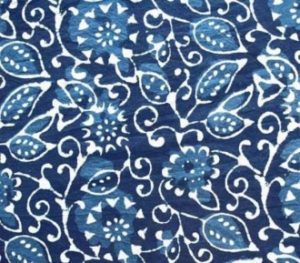

Making: The process of making is very interesting and involves different stages. Firstly, the fabric received from the mills is carefully washed to remove impurities. The motifs and designs are printed on to the fabric using blocks which are dipped into fast dyes. After that the fabric is spread out in sun for the drying, and later dipped into a vat of dye and then again left for drying. And this is how this beautiful Rajasthani Handicraft is made.
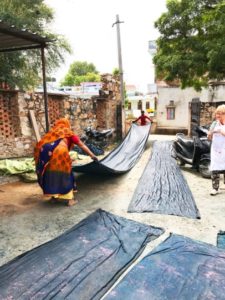
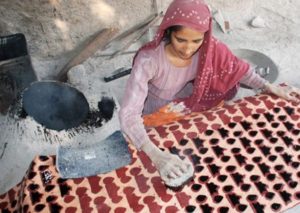

Colors and dyes: Traditional dabu prints are made with natural dyes like kashish (grey-brown) and indigo (blue), as well as yellows and reds derived from fruits like pomegranate. Today a lot more color options are available to artisans since they are no longer restricted to vegetable dyes and can use synthetic dyes as well. Fabrics can also be dyed more than once, creating the double dabu and triple dabu effect with a richer, more colorful look.
Motifs and designs: The typical motifs used are inspired from nature i.e peacocks, mangoes, leaves, cornstalks (called boota), sunflower (surajmukhi) and animal figures. Geometric shapes, dots and wavy lines may also be used. The designs thus created are repeated all over the fabric. Sometimes, the mud paste cracks and leaks, creating a distinctive vein like effect like Batik.


Industrial use: Various garments like shirts, sarees, salwar kameez, kurtas, towels, shawls, linens, bed sheets and curtains are printed using Dabu design and quite commonly put on sale. In ancient days, these were used mostly to decorate only sarees made of high-quality cotton fabrics like Maheshwari cotton. Silk and georgette fabrics are also used nowadays.
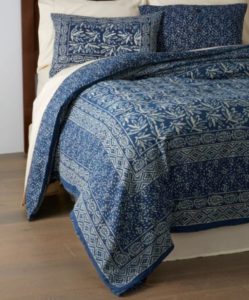
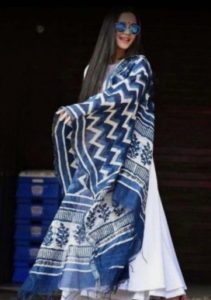
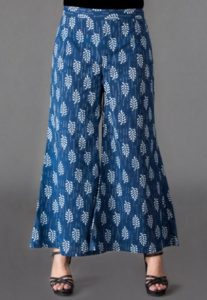

Like many other traditional Indian hand printings style, Dabu also lost its significance in this digital world. It became a time-consuming process with less profits. Mostly the artisans opted to an easy practice of the cluster. But some artisans work tirelessly to keep this art alive and for this they are understanding the demands and interest of the consumers and buyers to change the designs accordingly. The government also supported them by providing funds and facilities. Since last few years some new experiments and variations in the designs and dyeing are being done by artisans for reviving the art. Different minerals and vegetable dyes are used by printers to enhance the beauty of Dabu print. These combined efforts of artisans and government are helping in regaining the beauty and popularity and demand of dabu printed fabrics.
As a design student dabu printing was explored on cotton fabric by using pigment dyes. From the printed fabric runners were made. For enhancing the beauty of surface of runners pleats and tucks technique also were used to add interesting effects.
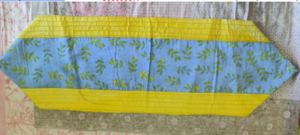
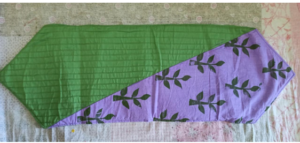
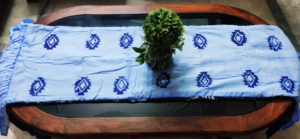
https://www.utsavpedia.com/motifs-embroideries/daboo-print/
https://thedesigncart.com/blogs/news/dabu-print
Satyam Fashion Institute, Noida – Webinar